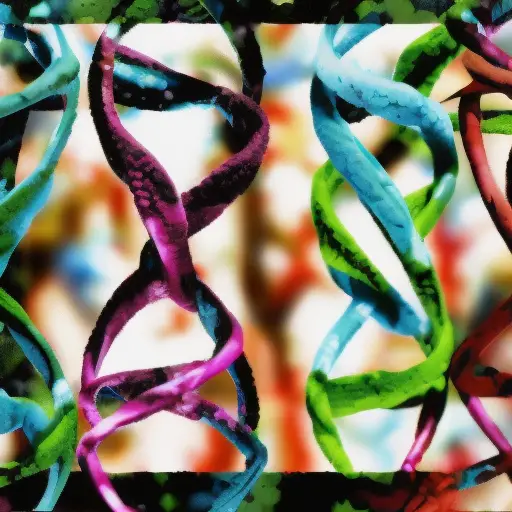Gene vs. Allele: A gene is a sequence of nucleotides in DNA or RNA that codes for a molecule that has a function. During gene expression, the DNA is first copied into RNA. The RNA can be directly functional or be the intermediate template for a protein that performs a function. DNA consists of a chain made from four types of nucleotide subunits, each composed of a five carbon sugar, a phosphate group and one of the four bases adenine, cytosine, guanine, and thymine. Genes can acquire mutations in their sequence, leading to different variants, known as alleles, in the population. An allele is a viable DNA coding that occupies a given locus on a chromosome. Usually, alleles are sequences that code for a gene and individual’s genotype for that gene is the set of alleles it happens to possess. Presence of different alleles of the same gene can result in different observable phenotypic traits, such as different pigmentation. However, there are several differences between a gene and an allele; What is the difference between a gene and an allele?
So What is the Difference Between a Gene And an Allele?
Definition:
A gene is a segment of DNA where nucleotides in DNA codes for a molecule that functions and which control a specific trait while an allele is a variant of a particular gene which exhibits different phenotypic variations in the same trait.
Functional difference:
A gene is a portion of DNA that determines certain traits through genotypes along with environmental and developmental factors. Some genetic traits are instantly visible such as eye color and the number of limps and some are not, such as blood type and risk for specific diseases. While an allele is responsible for the variations in which a given trait can be expressed.
Pairing:
Genes do not occur in pairs and have no differentiation while alleles occur in pairs where they are differentiated into recessive and dominant categories.
Production of opposite phenotypes:
This is a significant difference between alleles and genes where alleles produce opposite phenotypes that are contrasting by nature. When two pairs of a gene are homogeneous in nature, they are called homozygous. If the pair consists of different alleles, they are called heterozygous where the dominant allele gains an expression.
Inheritance:
When a person inherits a pair of a gene, one from each parent, the genes may be the same for an offspring. While the alleles cause differences between individuals due to variation in genotypes thus each gene specifies a particular trait with a different sequence of a gene which is allele giving rise to different phenotypes.
Expression:
The process of producing a biologically functional molecule of either RNA or protein is known as gene expression which results in the formation of a product called a gene product. All humans share the exact same genes while alleles decide the expression of these genes specifically.
The Number involved:
A single gene determines a particular trait. The genome size and the number of genes it encodes vary widely between organisms. While two or multiple alleles bring variations to the traits.
Location:
Genes are found in all known organisms and they have a variety of different forms, which are located at the same position or genetic locus, on a chromosome while alleles can be identified in multi-genome organisms. An allele is an alternative form of a gene in diploids, one member of a pair that is located at a specific chromosome.
Influence:
Genes encode for a single protein in which encoded information is translated into proteins that are amino acid sequences by living cells while alleles produce opposite phenotypes which are contrasting by nature. When a couple of partners of a gene are identical in nature they are homozygous and heterozygous if made up of different alleles.
Genetic make-up:
Genes create individual and they are made up of DNA. Some genes act as instructions to make molecules called proteins which are contained in chromosomes. While alleles bring differences to individuals in a population and its considered variant form of a gene.

